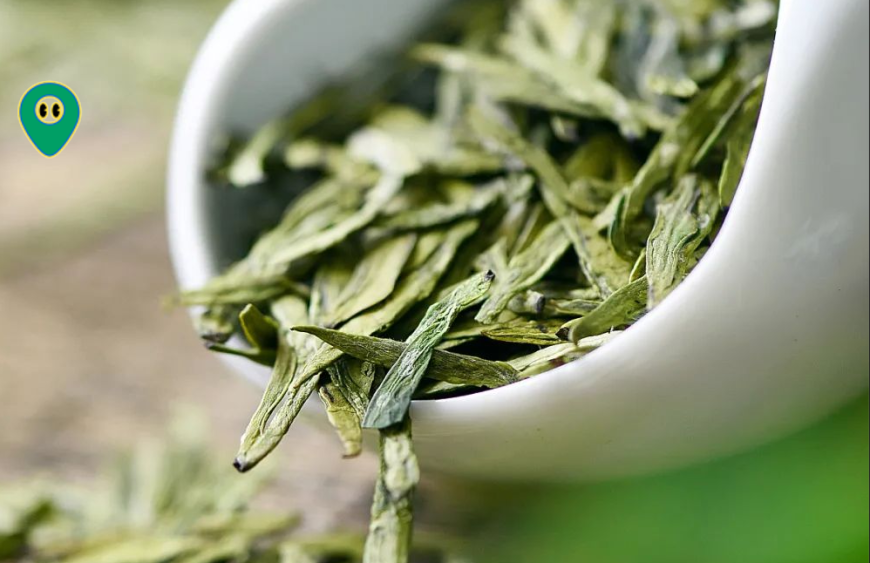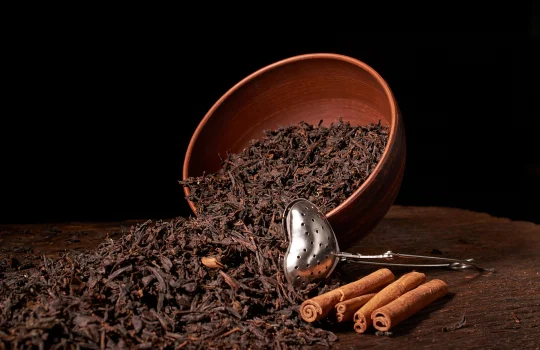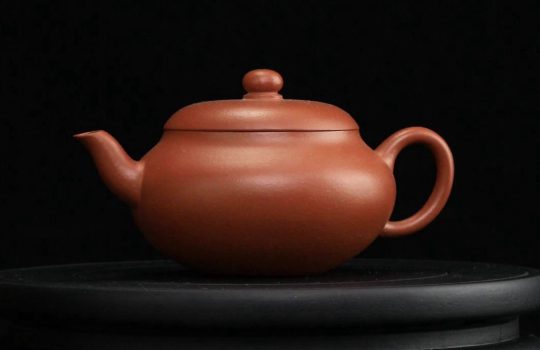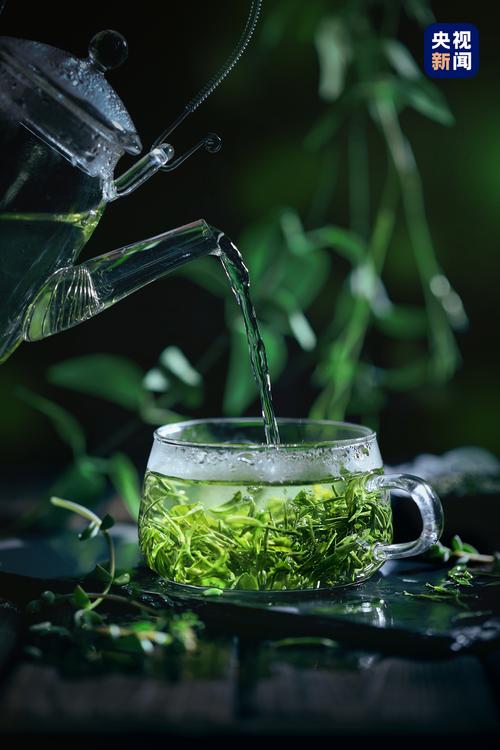Chinese tea culture has a long history and a wide variety of teas, each with its own distinctive flavour and exquisite production process. From the tender buds of the tea tree to a cup of fragrant tea broth, it is the result of the ingenuity of countless tea makers. Next, please follow me into the wonderful world of tea, from the tea tree to the subtle transformation of tea.
First, the colourful world of the tea tree
Tea tree, as the source of tea, its many varieties, different forms. Each tea tree has its own unique characteristics, providing endless possibilities for tea diversification. From the ancient wild tea tree, to the artificially cultivated varieties, which together constitute a gorgeous map of the tea tree.
 The rich and colourful varieties of tea trees have laid a solid foundation for the diversification of tea quality and flavour. In China, there are many varieties of tea trees, each with its own characteristics. Large-leafed tea trees, such as Mengku large-leafed species, its fat leaves, is the raw material for Pu’er tea, Dian Hong and other good products; medium-leafed species of tea trees to Tieguanyin, Shui Xian and other oolong tea as a representative of the unique ‘Guanyin rhyme’ and mellow flavour is a great taste; and small-leafed species of tea, such as Xihu Longjing, Biluochun, and other famous green teas, known for its exquisite appearance and The small-leaf varieties of tea trees, such as Xihu Longjing, Biluochun and other famous green teas, are famous for their delicate appearance and fresh taste. These different varieties of tea trees in the form, growth environment adaptability and the differences in the composition of the tea leaves, and further promote the diversification of the development of the tea production process.
The rich and colourful varieties of tea trees have laid a solid foundation for the diversification of tea quality and flavour. In China, there are many varieties of tea trees, each with its own characteristics. Large-leafed tea trees, such as Mengku large-leafed species, its fat leaves, is the raw material for Pu’er tea, Dian Hong and other good products; medium-leafed species of tea trees to Tieguanyin, Shui Xian and other oolong tea as a representative of the unique ‘Guanyin rhyme’ and mellow flavour is a great taste; and small-leafed species of tea, such as Xihu Longjing, Biluochun, and other famous green teas, known for its exquisite appearance and The small-leaf varieties of tea trees, such as Xihu Longjing, Biluochun and other famous green teas, are famous for their delicate appearance and fresh taste. These different varieties of tea trees in the form, growth environment adaptability and the differences in the composition of the tea leaves, and further promote the diversification of the development of the tea production process.

Fresh leaf plucking, as the starting point of tea production, its timing and method have a crucial impact on the final quality of the tea leaves. Picking too early or too late will affect the contents and taste of the tea leaves. For example, famous green tea is usually picked in the spring at the beginning of the tea tree’s sprouting, when the buds and leaves are tender and rich in amino acids, which ensures that the tea made is fresh and refreshing. For Oolong tea and other types of tea, according to its unique production process and quality requirements, picking is done at different stages of the tea tree’s growth, such as one bud, three or four leaves, in order to accumulate enough inclusions to shape its unique flavour.
In terms of plucking techniques, although hand-picking is more costly, it can accurately select the buds and leaves to ensure the quality of the tea, whereas mechanical plucking is efficient but may cause damage to the tea leaves. Therefore, tea growers need to be gentle during the picking process to prevent the buds from being damaged, heating up or turning red, so as to maximise the freshness and quality of the leaves.

After picking, the fresh leaves need to undergo withering, which is an indispensable step in tea making. The core purpose of withering is to allow the leaves to lose a moderate amount of water, thereby softening the leaves and preparing them for the subsequent kneading or moulding process. At the same time, withering also promotes changes in the internal chemical composition of the leaves, such as enhancing the activity of hydrolytic enzymes, so that substances such as polyphenols and polysaccharides undergo moderate oxidation and degradation, thus laying a solid foundation for the formation of tea aroma.
There are various methods of withering, among which natural withering and artificial withering are the two main ways. In natural withering, the fresh leaves are evenly spread on bamboo mats or bamboo plaques, placed in a well-ventilated, cool and dry environment, and allowed to naturally lose moisture. Although this method takes longer, it maintains the purity and naturalness of tea quality. Artificial withering, on the other hand, accelerates the water loss process of fresh leaves through precise control of temperature, humidity and ventilation with the help of withering tanks, withering machines and other equipment. For example, the withering of white tea often adopts the compound withering method that combines natural withering and indoor heating withering, and after a long period of careful withering, the tea leaves gradually exude a unique fragrance and sweet flavour.

Greening is the core process in the production of green tea, yellow tea and other teas, and it has a decisive influence on the formation of the final quality of the tea leaves. Its core purpose is to use high temperature to rapidly destroy the enzyme activity in the fresh leaves, thus stopping the enzymatic oxidation of polyphenols and ensuring that the tea leaves can maintain their distinctive green characteristics. At the same time, greening also helps to eliminate the grass in the tea leaves, further develop the unique tea flavour, so that the tea leaves initially show its good quality characteristics.
There are many different methods of greening, including stir-frying, steaming, baking and sun-drying. Stir-frying is a process whereby the leaves are rapidly heated through the walls of a high-temperature pot, and then stir-frying completes the greening process. The tea produced by this method usually has a high aroma and strong flavour, such as the West Lake Longjing is an example. Steaming is the use of steam at high temperatures to kill the green, the tea colour is bright green, light green soup, with a unique ‘three green’ characteristics, Japan’s matcha tea will be used in this method. Roasting is to put the fresh leaves in the oven or dryer for double treatment of killing and drying, the tea leaves are loose, yellow-green in colour and aroma, often used as tea blanks for flower tea. Sun-drying is a unique way of killing the leaves, which directly puts the leaves under the sun, so that the tea leaves have a unique sun-drying scent, which is also one of the important steps in the production of Puerh Tea Raw Tea.

Kneading is the process of twisting the tea leaves. Through this step, the cells of the tea leaves are broken down, and the tea juice can seep out and adhere to the surface of the tea leaves. This not only helps the tea leaves to fully leach out the contents when they are brewed, but also makes the tea leaves curl into strips, presenting a beautiful appearance. At the same time, the breakage of the cell walls of the tea leaves during the kneading process also provides the necessary conditions for the subsequent fermentation or oxidation process.
The method of kneading varies according to the variety of tea and the production requirements. For example, green tea is kneaded relatively lightly and for a shorter period of time, with the aim of maintaining the integrity of the colour and shape of the tea leaves. Biluochun tea is lightly twisted to give it the unique shape of a curled conch. Black tea is kneaded more heavily and for a longer period of time, in order to fully destroy the cells of the tea leaves and promote the oxidation and polymerisation of the tea polyphenols, thus forming the unique colour and flavour of black tea. Oolong tea kneading techniques are unique, such as Tieguanyin tea through a number of ‘packet kneading’ and other techniques, the formation of a tightly knotted curls, such as the dragonfly head, frog legs like appearance characteristics.

Fermentation (oxidation) is a crucial part of the tea production process, which gives tea its ever-changing flavour. During the fermentation process, the polyphenols in the tea leaves are oxidised and polymerised by enzyme catalysis, resulting in the production of substances such as theaflavins and thearubigins. The changes in these substances not only make a significant difference in the colour, aroma and taste of the tea, but also directly affect the overall quality of the tea.
The degree of fermentation is a key factor in determining the quality of tea. From unfermented green tea, to partially fermented oolong tea, to fully fermented black tea, the colour of the tea leaves gradually changes from emerald green to reddish-brown, the aroma changes from fresh and light to rich and long-lasting, and the taste changes from sweet and refreshing to mellow and sweet.
During the fermentation process, conditions such as temperature, humidity and time need to be strictly controlled. For example, when black tea is fermented, the twisted tea leaves are usually placed in a temperature range of 25℃ to 30℃ and 90% to 95% humidity, after 2 to 4 hours of fermentation. Tea makers need to constantly observe the changes in the tea leaves and adjust the fermentation conditions to ensure that the tea leaves are fermented just right.
The control of the degree of fermentation of Oolong tea is more complicated. As the degree of fermentation of Oolong tea is affected by various factors such as varieties and seasons, tea makers need to make flexible adjustments according to the actual situation. They control the degree of fermentation by shaking and drying the leaves to create the unique ‘green leaves with red edges’ characteristic and rich and varied aroma and flavour.

Drying is the final stage of tea production, aiming to remove excess water from the tea leaves and bring their moisture content up to a suitable standard, thus ensuring stable storage and long distance transport. In addition, this step further deepens and fixes the unique aroma and flavour of the tea leaves.
There are various methods of drying, of which the common ones include drying, stir-frying and sun-drying. Drying is carried out with the help of a dryer, the temperature and time of which can be flexibly adjusted to suit different tea varieties and process requirements, ensuring uniform and stable tea quality. Stir-frying method through the pan frying way to make the tea heat drying, this process will continue to occur in the physical and chemical changes in the tea, so as to produce a unique aroma and flavour, for example, some of the famous green tea using low-temperature and long frying technology, in order to enhance the aroma of the tea and the persistence of the degree of richness. The sun-drying method makes full use of the sun’s heat, which is low-cost but subject to the influence of the climate, and the quality control is relatively difficult, mostly found in the traditional black tea or folk tea-making process.





